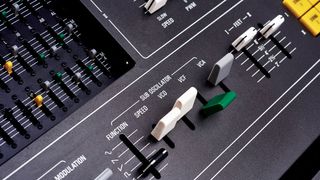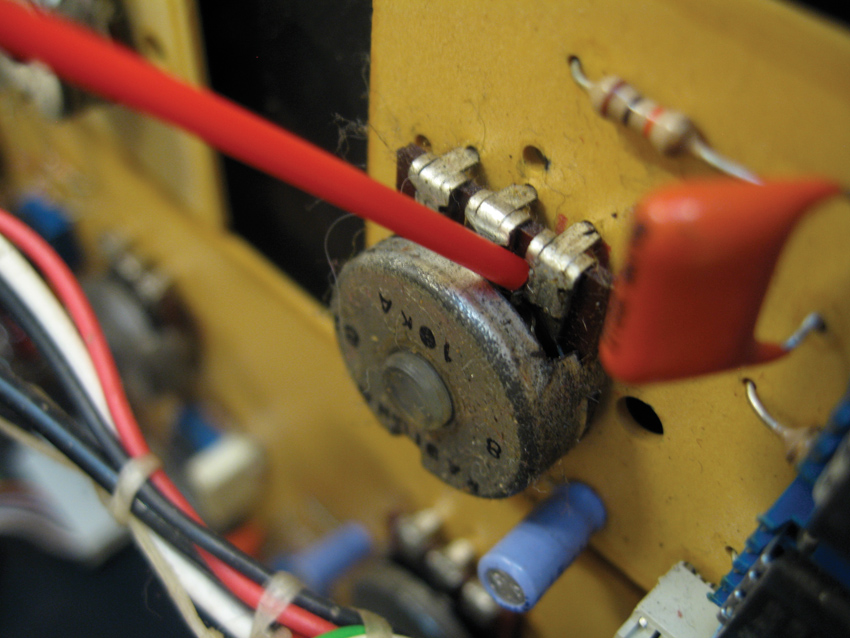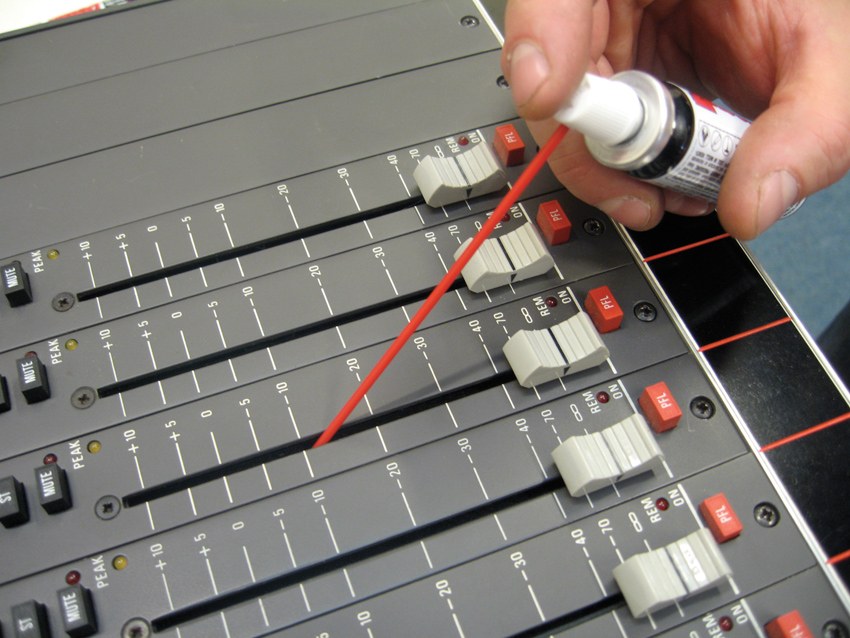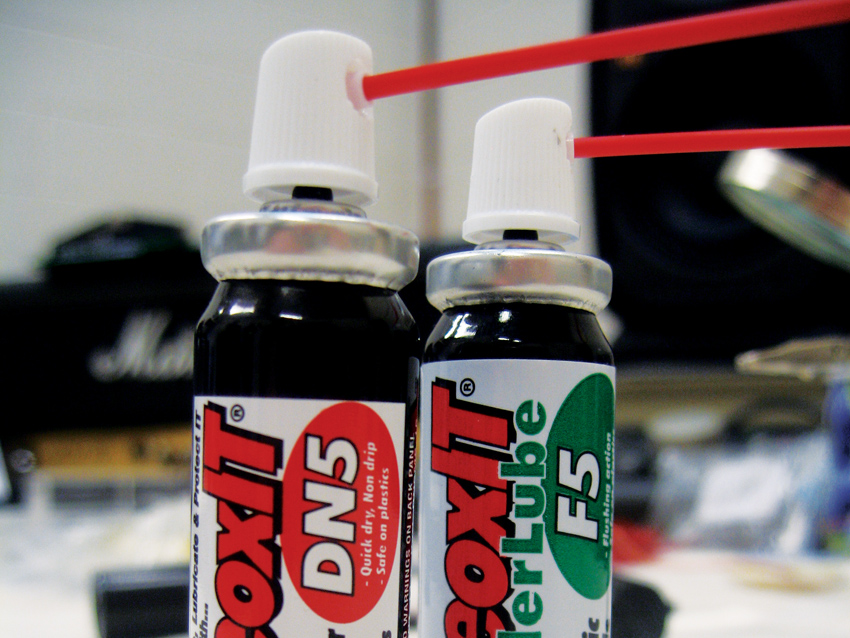How To Repair A Sound Mixer
How to ready crackly pots and faders on your synths, mixer and more

Whether information technology's a mixer , an effects pedal or a synthesizer , every pot (potentiometer) or fader is liable to get crackly, intermittent or ship random control voltages over fourth dimension equally the conductive tracking within gets coated in the dust and detritus of every day usage.
It doesn't matter how clean you keep the external facia of your equipment - dirt e'er finds a way in and adversely affects the variable conductive pathways of pots and faders, and no matter how many times you plow the pot or push the fader in the end, the dirt will build up to an extent where normal employ is impossible.
There are a plethora of cleaning, rejuvenating and lubricating products on the market that provide unproblematic ways to continue these important controls in good working club. Brands such equally Servisol and DeOxit accept a range of products for every type of moving component.
How to practice it
There are main three product types needed to get the job washed: an air duster (an droplets of compressed air), a cleaner and a lubricant. Be sure to get the correct product for the job as often people have used a switch cleaner (such as Servisol Super 10) on pots, which actually leaves them under-lubricated and more decumbent to wearing out, as well as feeling strong and dry.
It's worth noting that occasionally a pot or fader may be so erstwhile and worn out that no amount of cleaning and lubricating volition resurrect it, in which example information technology will demand to be replaced, but that's a whole other subject.
Hither'due south a simple guide to bringing your pot or fader dorsum to life.
Step 1; With the unit of measurement powered off, give the pot a adept number of turns (20 or more) or button the fader upwards and down repeatedly to loosen dirt. Use an air duster to blow out any loosened textile and echo the process once more.
On a pot, the entry point for the air squeegee nozzle is where the solder tags enter the pot casing - you should be able to meet the edge of the conductive rail and the wiper when yous plough the shaft. For a fader, button the slider to i stop and insert the nozzle into the track slot at the other end pointing down, accident out the dust and repeat from the opposite end having moved the slider.

Step 2: Using the same procedure as with the air duster apply the contact cleaner and turn the pot or push the fader to work the chemical compound in.
Footstep 3: Repeat pace 2 to clean out any jump-on dirt that may have been loosened by the first application.

Stride 4: Leave the cleaner to evaporate for a few minutes before powering the unit upwardly and testing the pot/fader once more.
Step 5: If the pot/fader now sounds make clean, it will need lubricating, as a clean and dry pot or fader volition article of clothing out apace and feel stiff and scratchy. The lubricant is applied in the aforementioned mode as the cleaner.
The DeOxit DN5 (for pots) and F5 (FaderLube for faders) both have a lubricating activity and thus seem more expensive than other products, simply don't be fooled equally they both excel at this job.

How To Repair A Sound Mixer,
Source: https://www.musicradar.com/tuition/tech/how-to-fix-crackly-pots-and-faders-on-synths-and-mixers
Posted by: cavanaughtatem1950.blogspot.com



0 Response to "How To Repair A Sound Mixer"
Post a Comment